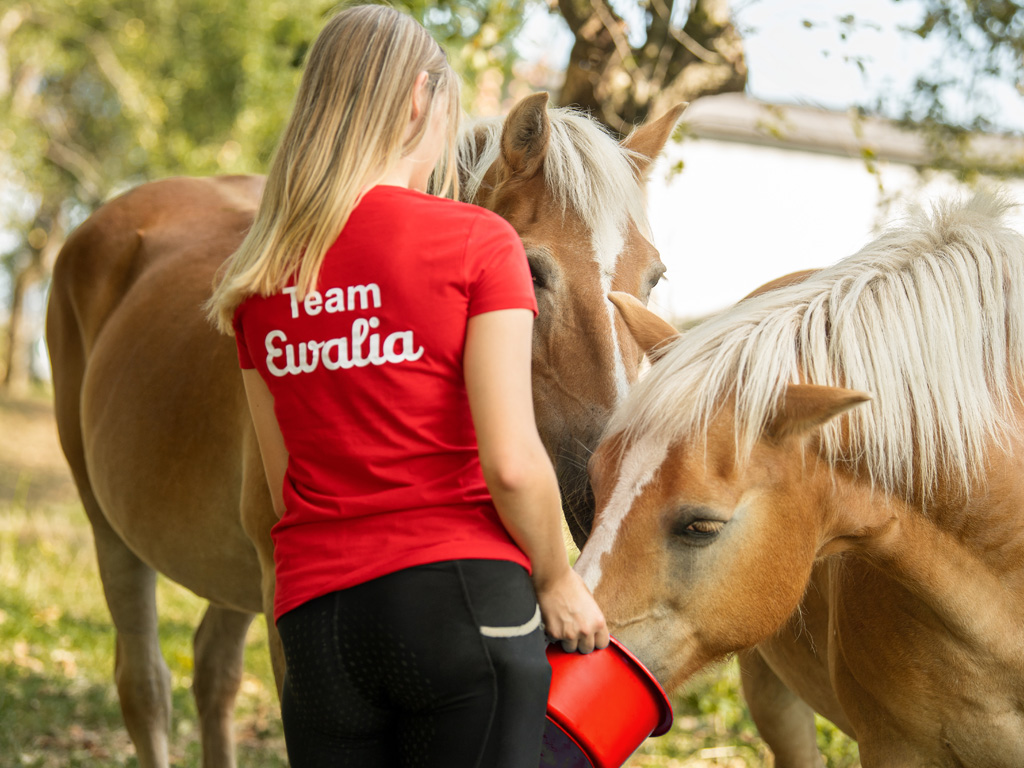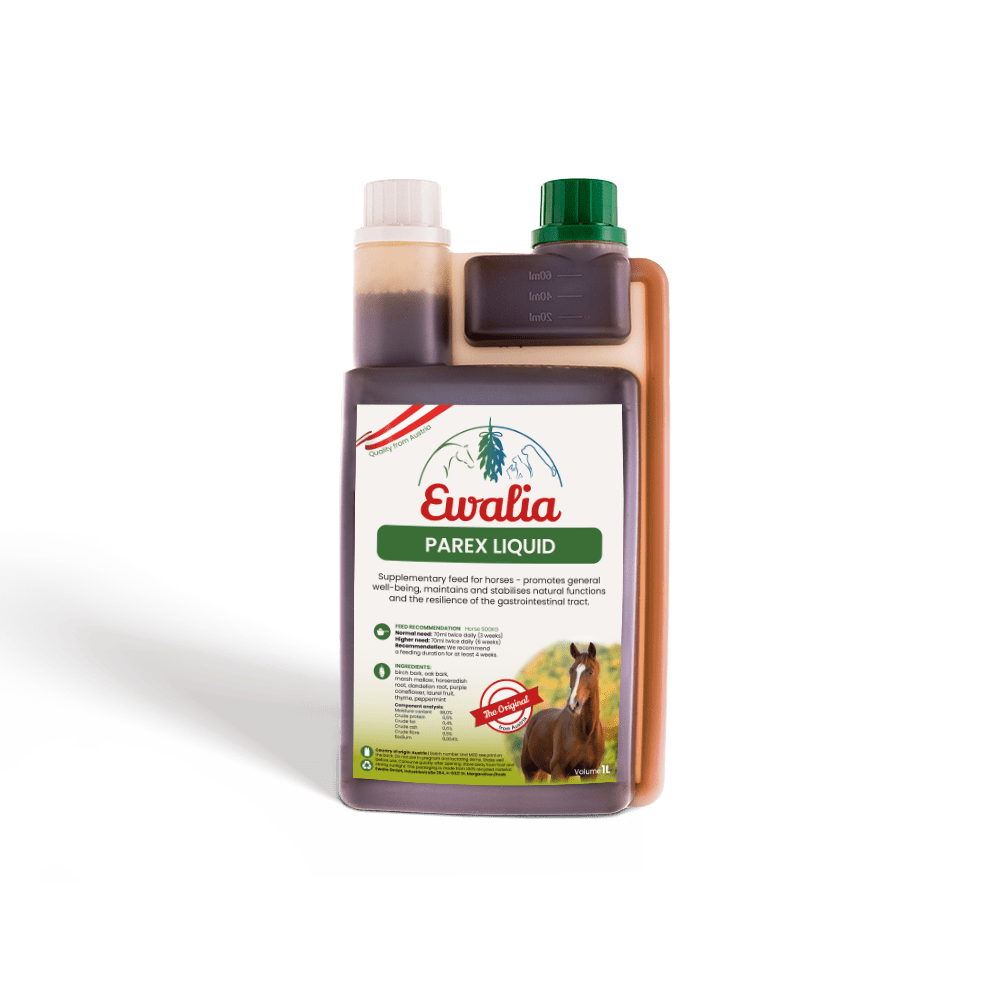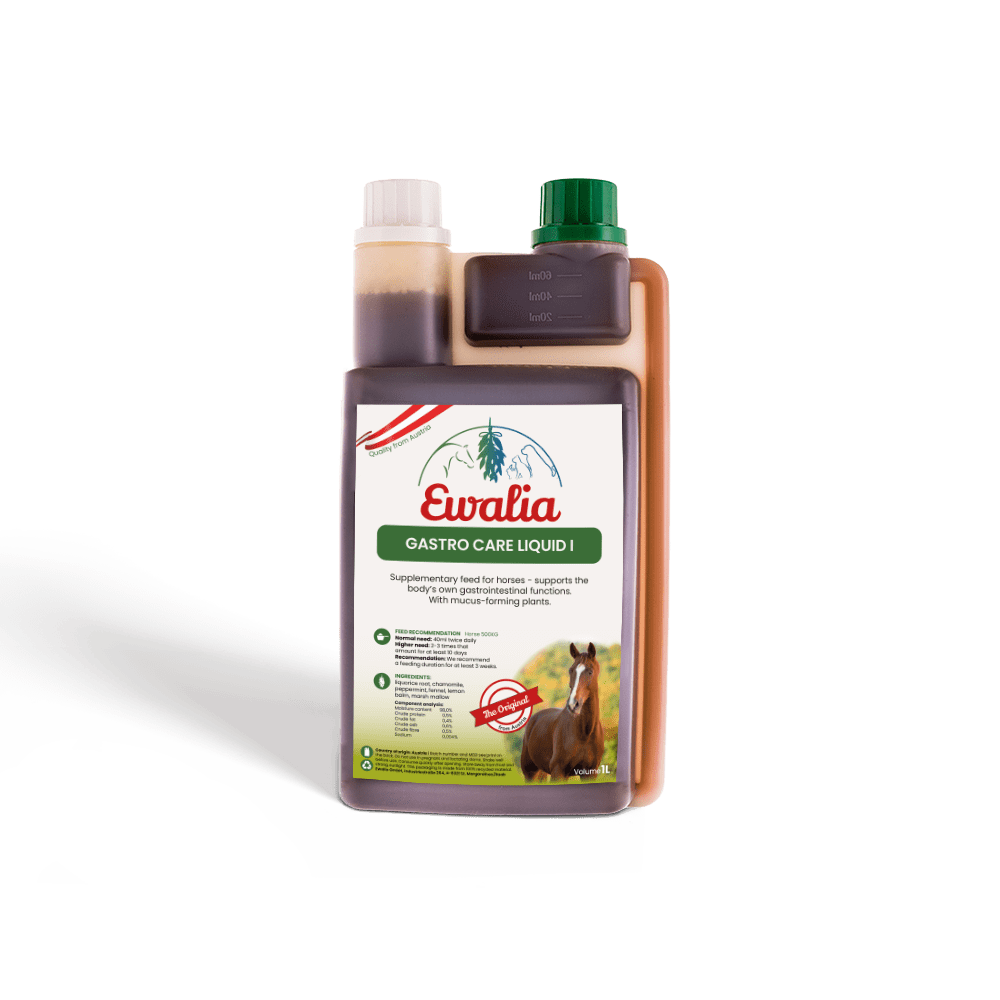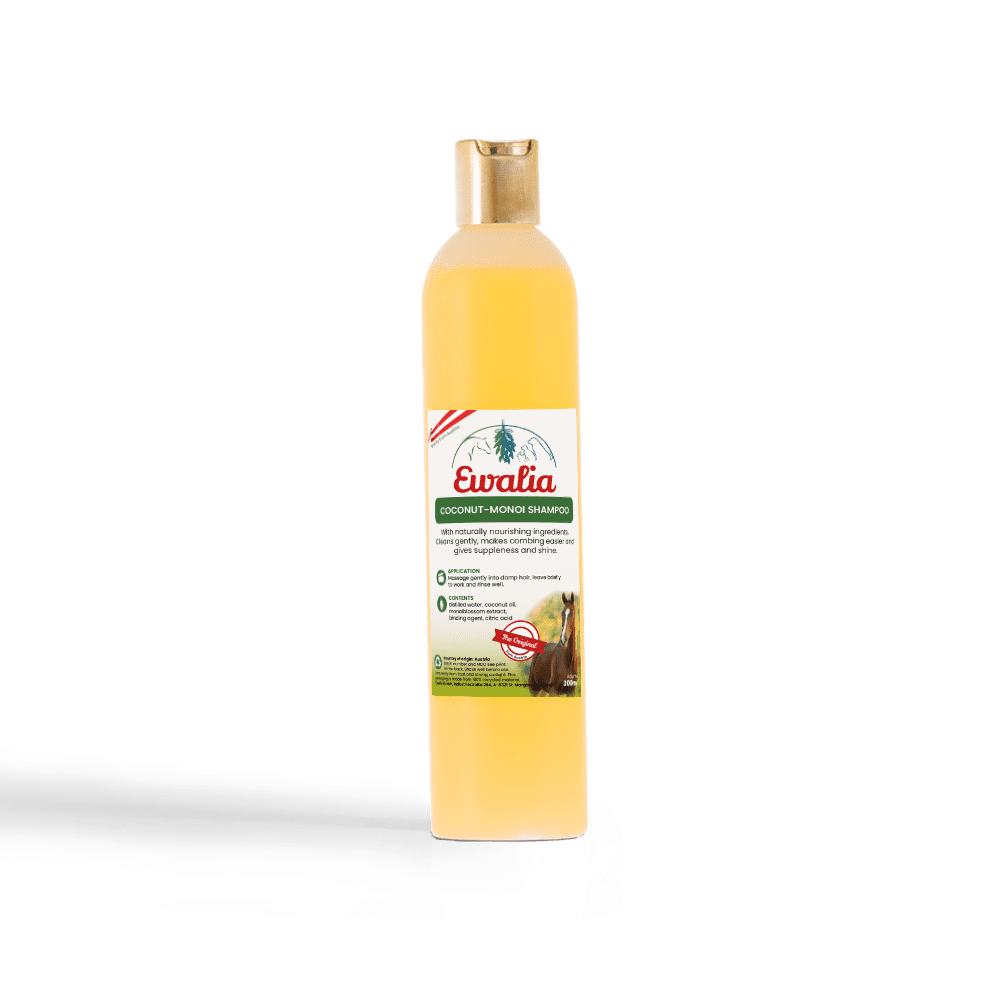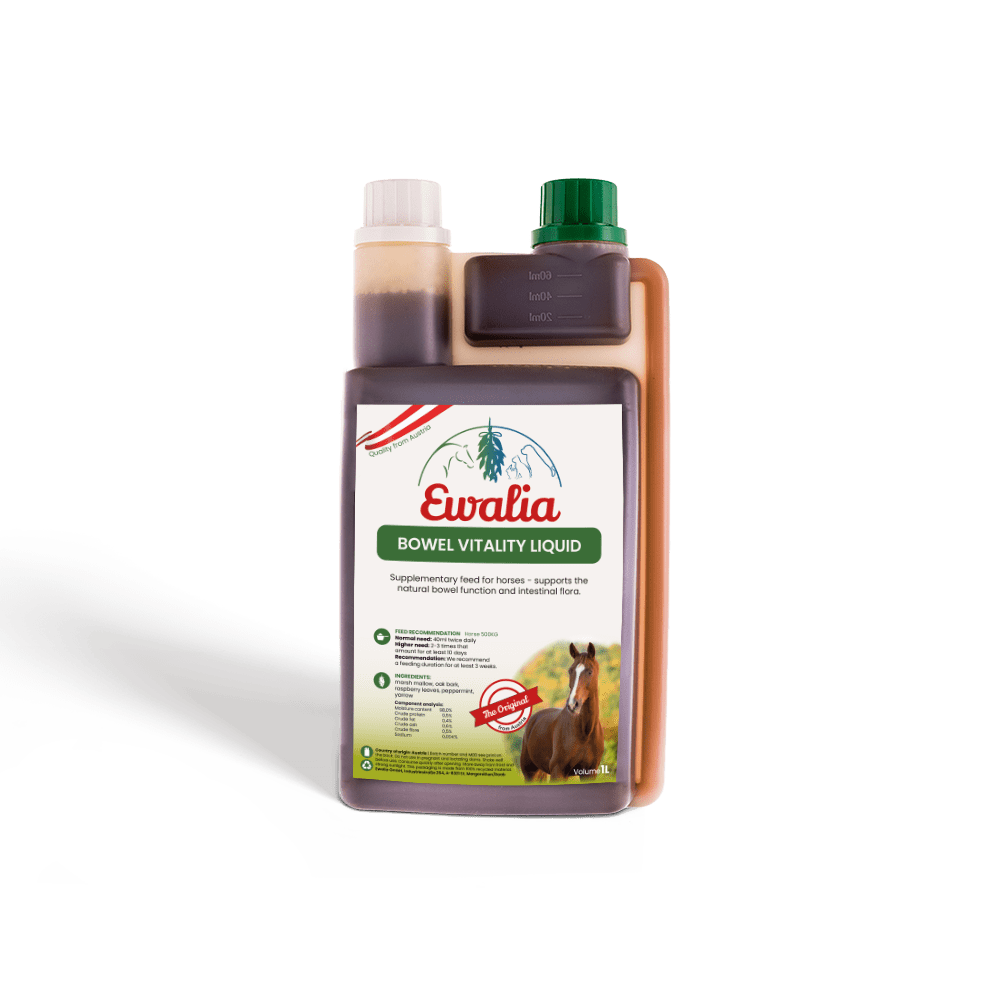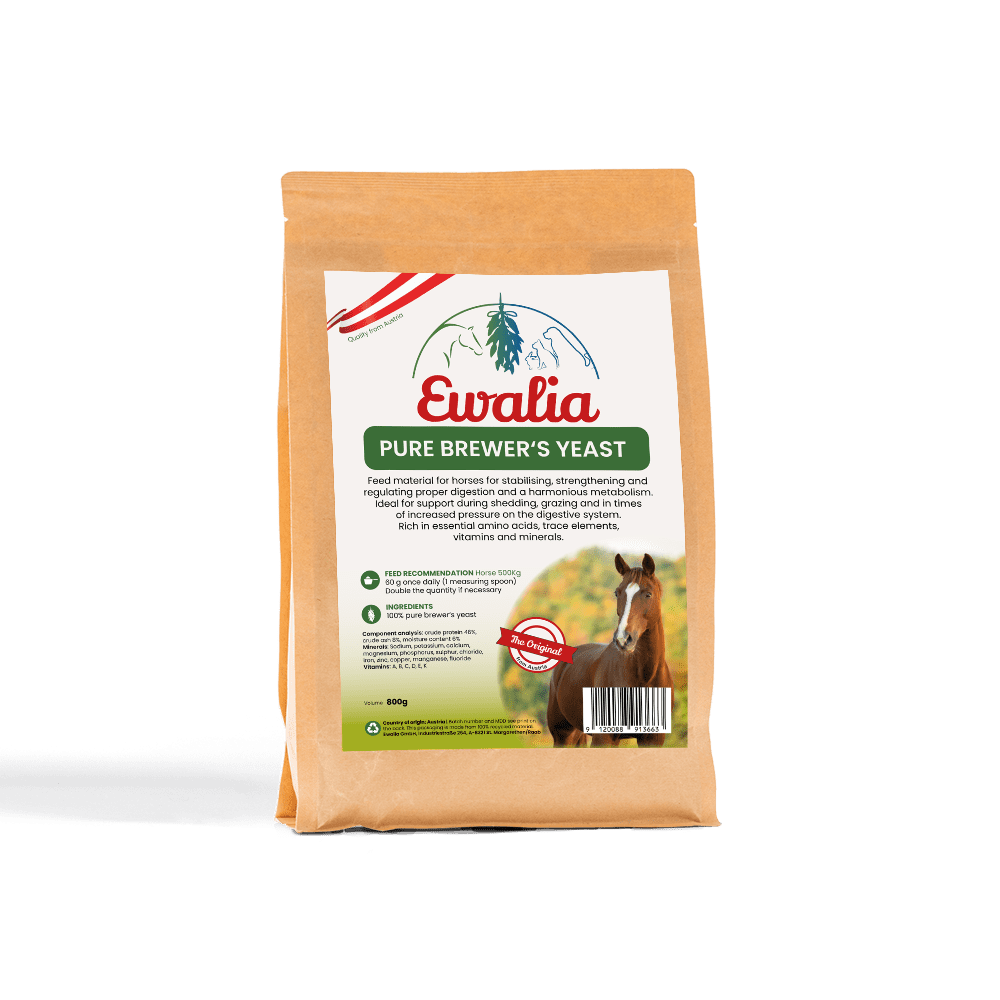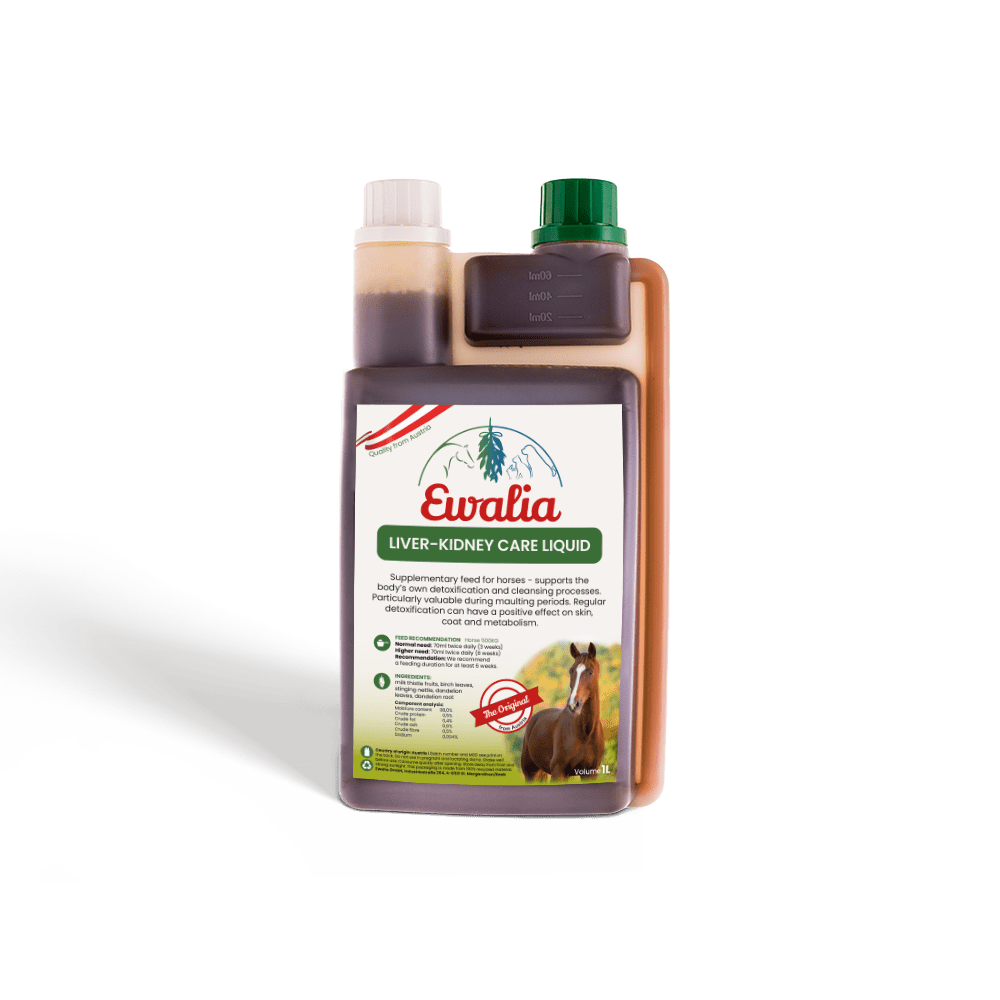Free faecal water syndrome in horses
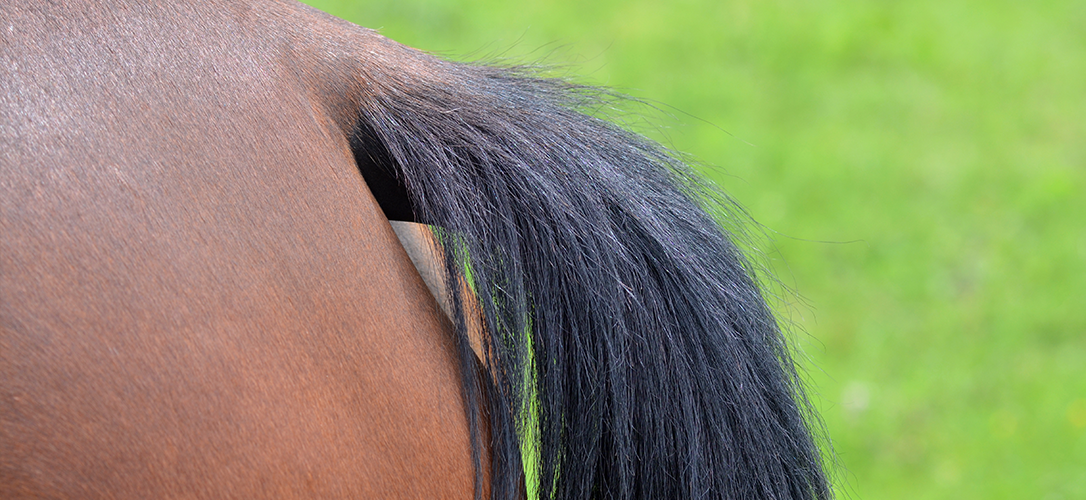
The gaunt grey's hind legs are sticky and brown, his belly bloated, and he's been licking at the iron lock of his paddock for an hour. He appears tired and lethargic. He raises his tail to pass faeces and the cause of his brown hindquarters is now clear. A brown liquid runs down his hocks during defecation. He has watery stool again, even though the feed transition period is over!
A horse like this can be found at almost every riding stable, and there are as many causes for their digestive problems, and the resulting watery stool and bloating, as there are types of saddle pads in the tack room. Here you'll find a handy summary about this subject and useful tips on how you can help a horse with recurring watery stool.
What is free faecal water syndrome?
In free faecal water syndrome, aka watery stool, the horse's faeces are not "watery" per se, but in most cases consisting of a brown mixture of different bodily fluids such as bile, lymphatic fluid and other fluids that are not reabsorbed during the digestive process but rather are carried or pushed along in the intestine until they emerge through the anus. Consistencies may vary, from slimy and viscous to a watery liquid which runs out the anus in large quantities. The amount depends on the cause, and so watery stool is therefore considered to be a symptom. First, it must be determined whether the horse has watery stool or diarrhoea.
What is the difference between watery stool and diarrhoea?
The faeces from horses who emit watery stool is generally softer. One should, however, make a clear distinction between this and diarrhoea. If, instead of just some liquid running out while the horse is passing faeces, it all splashes out in a watery mess, this is a sign that you should seek veterinary advice promptly, as it can lead quickly to a loss of electrolytes and even be life-threatening for the horse.
Where do intestinal fluids come from?
Watery stool is a mixture of different fluids, secretions and mucous which come into the feed mash from different areas. Let's take a closer look at the supply and elimination of fluids during the digestive process.
The intake of nutrients begins at the "head" of the digestive process, i.e. in the mouth. Here, approximately 40 litres of saliva are produced daily from several different salivary glands. The chewed feed is mixed with the saliva and swallowed. When it reaches the bottom of the oesophagus, it is then pushed into the stomach. The digestive process begins with chewing and swallowing, as well as the formation of enzymes and hormones. These control the subsequent processes in the stomach and intestines, for example the amount of gastric acid and digestive juices as well as activation of the intestinal peristalsis, i.e. muscle activity in the intestinal tract.
Once it enters the stomach, the chewed and insalivated feed is transported further through contractions in the cells of the stomach. The middle (fundus) and end (pylorus) of the stomach is where pre-digestion and preparation of the mash for the intestine begins. The pepsinogen cleavage is worth noting here. Pepsinogen is an inactive enzyme which is "activated" through gastric acid and converted into pepsin. This pepsin is responsible for splitting and breaking down proteins in the small intestine.
The gastric acid dissolves easily digestible carbohydrates and starts the absorption of protein. The stomach empties itself every two hours. Feeds that swell considerably, like starchy concentrate feeds, or modern stomach-cleaning clays like bentonite are passed quickly into the small intestine, often binding with a large amount of water. However, the dry clumps of feed can then lead to the bowel becoming sluggish, because the intestinal muscles must work hard to pass them further along. Worst case, this gives the horse an irritable bowel instead of a "cleansing".
Having arrived in the small intestine, the chyme comes in contact with more fluids, namely bile from the liver (horses do not have gall bladders) and secretions from the pancreas – up to 30 litres each day. Both are responsible for fat and carbohydrate cleavage and are dependent on one another, as these processes can only occur in alkaline, i.e. non-acidic, zones.
Mucus is produced along the entire length of the small intestine (19-30 metres), facilitating further transport. In addition, the cells of the small intestine are quite permeable. All in all, for a 500 kg horse, 125 litres of water is secreted into the digestive tract each day. Sodium content plays an important role in the small intestine. The presence of electrolytes, especially sodium, is the driving force behind water absorption. An imbalance in electrolyte levels can lead to water loss and watery stool.
The highly effective lymphatic system in the appendix also helps rapidly reintroduce water into the intestine or its reabsorption into the metabolic cycle. The actual removal of liquid from the digestive mixture before excretion only takes place in the rear part of the large intestine.
In summary: The entire digestive process and its associated fluid balance is highly complex and should be understood as a cycle. Fluids are supplied by saliva, stomach secretions, intestinal mucosa, bile, from the lymphatic system, the liver, and many other sources. Ideally, the fluid is reabsorbed into the horse's body to be made available again for the next digestive process. However, if one area – stomach acid, intestinal muscles, nutrient content or electrolyte supply – is knocked out of balance, the whole system will no longer work as it should.
What are likely causes of watery stool?
It cannot be assumed that watery stool is purely a problem of reabsorption in the large intestine. In most cases it is not a disease in and of itself, but rather a symptom signifying an imbalance in the digestive system.
External circumstances – changes to feed, the excitement of a competition, changes in stabling, joining a new herd or new medication – can disrupt the digestive process in the short term and do not require the urgent veterinary attention. This stress normally recedes quickly once the cause of stress has been eliminated. If the watery stool continues for longer than six weeks, it is recommended that specific areas be examined more closely:
Dental problems and/or poor chewing ability
Bad teeth, inflammations in the mouth, and deformed molars not only result in an inadequate breakdown of feed through chewing, the associated pain can also cause insufficient nutrient intake. When a horse suffers from watery stool for a noticeably long time, a visit by an equine dentist should be the first step in finding the cause. A horse's inability to chew its feed properly and the resulting inadequate stimulation of saliva will have an impact on later digestive processes.
Parasites
Proper worm management should be a basic part of stable management in every barn. The analysis of a faecal sample can rule out a large number of possible parasites. The rest can be detected by a blood sample if a parasitic infection is suspected. The intestinal damage caused by worms can lead to malnutrition and is also quite painful for the animal. A look into a deworming plan is therefore also a good approach.
Malnutrition
Watery stool can also be caused by nutritional deficiencies. Iron and sodium deficiencies effect water resorption in the small intestine. A protein deficiency can lead to bowel irritation when there is not enough protein to regenerate tissue. The horse should be given a well-balanced total ration adapted to its needs, and this should be revised by the horse owner or keeper annually or semi-annually. A full blood count will also provide information about existing acute deficiencies, but will not replace balancing the horse's basic feed ration. Not every deficiency will be seen immediately in blood work results.
Gut microbiotica imbalances
The gut microbiome is an undefined thing. There is no "one" gut microbiome. The make-up of a horse's microbiotica will depend on what the horse eats, where it lives, how it is kept and how it is exercised/used. The colonisation and pH-value of each intestinal loop can look quite different. Even two horses of the same breed in the same barn may be found to have quite different bacteria in their guts. A bacterial imbalance (dysbiosis) can have different causes and should be looked at by a clinic or a specialist veterinary surgeon. A basic prerequisite for determining the cause of an imbalance in bacteria, fungi, and yeasts is a clinical analysis of the gut microbiome. However, a gut analysis should be considered only when all other problem areas have been examined and treated.
Poor-quality hay
Horse owners, excepting those that care for their horses themselves, are often not directly involved in the quality assessment of roughage. They are therefore dependent on the quality control of the farm where they keep their horse. However, feed bales with mould or those contaminated by too much earth or sand are not easy to detect. Sometimes the riding pupils feed the horses, sometimes the workers themselves, and thus an unusable bale can end up in the manger. It's worth taking a look to learn what the horse is being fed. If you shake out hay and notice that it is is quite dusty, smells stale, looks brown or even contains clumps of earth, you can assume that the level of quality management in your barn is inadequate. One of the most common causes for persistent watery stool is poor-quality hay (fungus growth or excess mould). If the straw content then exceeds 20% of the daily ration, this can lead to deterioration in hay quality. If your barn feeds haylage or dried silage, you should check their quality too. Dried silage isn't necessary the main cause of watery stool. However, if the silage resembles cattle feed, is very wet, has a strong odour or even shows a number of white spots, then you can assume a large presence of lactic acid bacteria which will have a negative impact on gut microbiotica. Such silage should not be fed to your horse.
Gastritis, gastric ulcers
Persistent watery stool may also be caused by gastritis or a bleeding gastric ulcer, especially if a horse exhibits chewing, yawning or licking behaviours, is quite sensitive in the girth area or directly on the belly, and has a stiff sacroiliac joint. You can read more about this topic here -> (Link Gastric Ulcers).
Stress in all forms and from different causes:
- Hunger from too-long intervals between feeding
- Stress within the herd
- Stress from poor stable conditions
The main cause of digestive problems in horses is stress. The horse feels unwell or overwhelmed, is hungry, can't relax, can't stand still or perhaps seems lethargic, is in pain, or maybe even depressed. Sooner or later, all this can lead to hyperacidity and subsequently to a stomach inflammation, an imbalance of gut microbiotica or directly to an inflammation of the small intestine. Prolonged stress must be avoided at all costs. It will have long-term effects on your horse's health, and so close observation is key. Analysing whether the affected horse eats at the feed rack often enough, seems comfortable in the herd, can (and is permitted to) move around sufficiently, has adequate rest times, etc., takes some time. Taking time to observe your horse is a good investment and will save it from pain and discomfort, and ultimately save you a great deal of money.
What to do about persistent watery stool?
Here are the most important steps:
- Take a good look at your horse. Is he showing any signs of pain? Is he bloated? Does he have colic? Does he have diarrhoea rather than watery stool? If your horse is suffering from pain, colic, or diarrhoea, call your vet IMMEDIATELY.
- Check your horse's worming programme and have a faecal sample analysed to determine whether deworming is necessary.
- Check hay and feed quality, ideally over a longer period of time. Stop feeding your horse wet silage immediately.
- Observe your horse in everywhere: in the barn, in the paddock, with stable mates at various times. Look into what could be causing your horse stress and try to minimise it (different box, different herd, changes in management, etc.).
- If your horse's watery stool is not being caused by poor-quality feed, stress, or parasites, have your vet come and take a look at his organs, inflammation levels, possible nutrient deficiencies and gut bacteria, and if necessary refer you to veterinary specialists.
How can I support my horse during feed transitions?
Seasonal watery stool most often occurs in autumn and spring, and always when the horse has been transitioned to new feed too quickly. When there's not enough time to adequately transition your horse to spring pastures or your horse always has a problem with the transition, you can provide support through the use of herbs. Marsh mallow for example contains a high percentage of mucilages, and has anti-inflammatory and relaxing effects on the gastro-intestinal tract. Oak bark is used in veterinary medicine to treat diarrhoea and has a beneficial effect on the intestinal peristalsis and the stomach walls. Its tannins help promote contraction and bring a lethargic intestine back into shape.
You can also help your horse by feeding it brewer's yeast, linseed powder or psyllium husk to bind the excess water from the green fodder in the stomach. You can start to feed your horse herbs a week before turning it out to pasture. We recommend that you wait until your horse's first day at pasture before giving it feeds that expand such as brewer's yeast or psyllium husk.
Author: Bianca Becker-Slovacek, 13-01-2020
For those who want to know more:
- Gäbel, G., & Loeffler, K. (2018). Anatomie und Physiologie der Haustiere. Stuttgart: utb.
- Gerber, V., Venner, M., & Straub, R. (2016). Pferdekrankheiten: Innere Medizin (2. Auflage Ausg.). (V. Gerber, & R. Straub, Hrsg.) Bern: utb.
- Reichling, J., Gachnian-Mirtscheva, R., Frater-Schröder, M., Di Carlo, A., & Widmaier, W. (2008). Heilpflanzenkunde für die Veterinärpraxis. Berlin-Heidelberg: Springer Medizin Verlag.
- Röhm, C. (2016). Rashid hat Kotwasser. Norderstedt: BoD.












